Synthesis of Co3O4 Nanoplates by Thermal Decomposition for the Colorimetric Detection of Dopamine
Abstract
:1. Introduction
2. Chemical and Methods
3. Results and Discussion
3.1. Fabrication of Co3O4 Nanoplates
3.2. Oxidase-like Activity of the Co3O4 Nanoplates
3.3. Detection of Dopamine Employing the Co3O4 Nanoplates
3.4. Analytic Performance for the Selectivity of Dopamine Detection
4. Conclusions
Author Contributions
Funding
Institutional Review Board Statement
Informed Consent Statement
Data Availability Statement
Conflicts of Interest
References
- He, Q.; Liu, J.; Liu, X.; Li, G.; Deng, P.; Liang, J. Preparation of Cu2O-reduced graphene nanocomposite modified electrodes towards ultrasensitive dopamine detection. Sensors 2018, 18, 199. [Google Scholar] [CrossRef] [PubMed]
- Liu, X.; Liu, J. Biosensors and sensors for dopamine detection. View 2021, 2, 20200102. [Google Scholar] [CrossRef]
- Gitler, A.D.; Dhillon, P.; Shorter, J. Neurodegenerative disease: Models, mechanisms, and a new hope. Dis. Models Mech. 2017, 10, 499–502. [Google Scholar] [CrossRef] [PubMed]
- Yang, J.; Wang, K.; Xu, H.; Yan, W.; Jin, Q.; Cui, D. Detection platforms for point-of-care testing based on colorimetric, luminescent and magnetic assays: A review. Talanta 2019, 202, 96–110. [Google Scholar] [CrossRef] [PubMed]
- He, Z.; Tong, Z.; Tan, B.; He, X.; Zhang, T.; Guo, Y.; Jin, L.; He, N.; Li, S.; Chen, Z. Rapid Detection of DNA Methylation with a Novel Real-Time Fluorescence Recombinase-Aided Amplification Assay. J. Biomed. Nanotechnol. 2021, 17, 1364–1370. [Google Scholar] [CrossRef]
- Li, T.; Yi, H.; Liu, Y.; Wang, Z.; Liu, S.; He, N.; Liu, H.; Deng, Y. One-step synthesis of DNA templated water-soluble Au–Ag bimetallic nanoclusters for ratiometric fluorescence detection of DNA. J. Biomed. Nanotechnol. 2018, 14, 150–160. [Google Scholar] [CrossRef]
- Yang, H.; Liu, M.; Jiang, H.; Zeng, Y.; Jin, L.; Luan, T.; Deng, Y.; He, N.; Zhang, G.; Zeng, X. Copy number variation analysis based on gold magnetic nanoparticles and fluorescence multiplex ligation-dependent probe amplification. J. Biomed. Nanotechnol. 2017, 13, 655–664. [Google Scholar] [CrossRef]
- He, Q.; Liu, J.; Liu, X.; Li, G.; Chen, D.; Deng, P.; Liang, J. Fabrication of amine-modified magnetite-electrochemically reduced graphene oxide nanocomposite modified glassy carbon electrode for sensitive dopamine determination. Nanomaterials 2018, 8, 194. [Google Scholar] [CrossRef]
- Liu, J.; Sun, L.; Li, G.; Hu, J.; He, Q. Ultrasensitive detection of dopamine via electrochemical route on spindle-like α-Fe2O3 Mesocrystals/rGO modified GCE. Mater. Res. Bull. 2021, 133, 111050. [Google Scholar] [CrossRef]
- Li, F.; Ni, B.; Zheng, Y.; Huang, Y.; Li, G. A simple and efficient voltammetric sensor for dopamine determination based on ZnO nanorods/electro-reduced graphene oxide composite. Surf. Interfaces 2021, 26, 101375. [Google Scholar] [CrossRef]
- Wu, Y.; Deng, P.; Tian, Y.; Feng, J.; Xiao, J.; Li, J.; Liu, J.; Li, G.; He, Q. Simultaneous and sensitive determination of ascorbic acid, dopamine and uric acid via an electrochemical sensor based on PVP-graphene composite. J. Nanobiotechnol. 2020, 18, 112. [Google Scholar] [CrossRef] [PubMed]
- Li, G.; Zhong, P.; Ye, Y.; Wan, X.; Cai, Z.; Yang, S.; Xia, Y.; Li, Q.; Liu, J.; He, Q. A highly sensitive and stable dopamine sensor using shuttle-like α-Fe2O3 nanoparticles/electro-reduced graphene oxide composites. J. Electrochem. Soc. 2019, 166, B1552. [Google Scholar] [CrossRef]
- He, Q.; Liu, J.; Liu, X.; Li, G.; Chen, D.; Deng, P.; Liang, J. A promising sensing platform toward dopamine using MnO2 nanowires/electro-reduced graphene oxide composites. Electrochim. Acta 2019, 296, 683–692. [Google Scholar] [CrossRef]
- Liu, H.; Xiong, R.; Zhong, P.; Li, G.; Liu, J.; Wu, J.; Liu, Y.; He, Q. Nanohybrids of shuttle-like α-Fe2O3 nanoparticles and nitrogen-doped graphene for simultaneous voltammetric detection of dopamine and uric acid. New J. Chem. 2020, 44, 20797–20805. [Google Scholar] [CrossRef]
- Liu, X.; He, F.; Zhang, F.; Zhang, Z.; Huang, Z.; Liu, J. Dopamine and melamine binding to gold nanoparticles dominates their aptamer-based label-free colorimetric sensing. Anal. Chem. 2020, 92, 9370–9378. [Google Scholar] [CrossRef]
- Chen, Q.; Liang, C.; Zhang, X.; Huang, Y. High oxidase-mimic activity of Fe nanoparticles embedded in an N-rich porous carbon and their application for sensing of dopamine. Talanta 2018, 182, 476–483. [Google Scholar] [CrossRef]
- Liang, L.; Zhao, Z.; Ye, F.; Zhao, S. Rapid and sensitive colorimetric detection of dopamine based on the enhanced-oxidase mimicking activity of cerium (IV). New J. Chem. 2021, 45, 6780–6786. [Google Scholar] [CrossRef]
- Wang, H.; Wan, K.; Shi, X. Recent advances in nanozyme research. Adv. Mater. 2019, 31, 1805368. [Google Scholar] [CrossRef]
- Chen, W.; Li, S.; Wang, J.; Sun, K.; Si, Y. Metal and metal-oxide nanozymes: Bioenzymatic characteristics, catalytic mechanism, and eco-environmental applications. Nanoscale 2019, 11, 15783–15793. [Google Scholar] [CrossRef]
- Lou-Franco, J.; Das, B.; Elliott, C.; Cao, C. Gold nanozymes: From concept to biomedical applications. Nano-Micro Lett. 2021, 13, 10. [Google Scholar] [CrossRef]
- Deng, H.; He, S.; Lin, X.; Yang, L.; Lin, Z.; Chen, R. Target-triggered inhibiting oxidase-mimicking activity of platinum nanoparticles for ultrasensitive colorimetric detection of silver ion. Chin. Chem. Lett. 2019, 30, 1659–1662. [Google Scholar] [CrossRef]
- Xu, D.; Li, R.; Wang, Q.; Yang, Y.; Wang, G.; Li, Z. Synthesis of silver nanocrystal with an excellent oxidase-like activity and its application in colorimetric detection of D-penicillamine. Microchem. J. 2021, 166, 106204. [Google Scholar]
- Chi, H.; Cui, X.; Lu, Y.; Yu, M.; Fei, Q.; Feng, G. Colorimetric determination of cysteine based on Au@Pt nanoparticles as oxidase mimetics with enhanced selectivity. Microchim. Acta 2022, 189, 13. [Google Scholar] [CrossRef] [PubMed]
- Cai, S.; Jia, X.; Han, Q.; Yan, X.; Yang, R.; Wang, C. Porous Pt/Ag nanoparticles with excellent multifunctional enzyme mimic activities and antibacterial effects. Nano Res. 2017, 10, 2056–2069. [Google Scholar] [CrossRef]
- Chen, Z.J.; Huang, Z.; Sun, Y.M.; Xu, Z.L.; Liu, J. The most active oxidase-mimicking Mn2O3 nanozyme for biosensor signal generation. Chem. Eur. J. 2021, 27, 9597–9604. [Google Scholar] [CrossRef]
- Wang, X.; Feng, S.; He, D.; Jiang, P. Porous manganese–cobalt oxide microspheres with tunable oxidase mimicking activity for sulfide ion colorimetric detection. Chem. Commun. 2020, 56, 14098–14101. [Google Scholar] [CrossRef]
- Huang, L.; Zhang, W.; Chen, K.; Zhu, W.; Liu, X.; Wang, R.; Zhang, X.; Hu, N.; Suo, Y.; Wang, J. Facet-selective response of trigger molecule to CeO2{110} for up-regulating oxidase-like activity. Chem. Eng. J. 2017, 330, 746–752. [Google Scholar] [CrossRef]
- Lu, Y.; Liu, Y.; Mo, J.; Deng, B.; Wang, J.; Zhu, Y.; Xiao, X.; Xu, G. Construction of hierarchical structure of Co3O4 electrode based on electrospinning technique for supercapacitor. J. Alloys Compd. 2021, 853, 157271. [Google Scholar] [CrossRef]
- Li, N.; Yuan, K.; Gao, T.; Li, S.; Qin, J.; Zhu, Y.; Du, J.; Xu, L.; Xu, J. Controllable synthesis of hierarchical nanoporous carbon@Ni(OH)2 rambutan-like composite microspheres for high-performance hybrid supercapacitor. Arab. J. Chem. 2022, 15, 103580. [Google Scholar] [CrossRef]
- Cordeiro, P.V.O.; Carvalho, N.M. Water oxidation reaction catalyzed by Co3O4 treated with organic compounds. Ind. Eng. Chem. Res. 2018, 57, 11259–11264. [Google Scholar] [CrossRef]
- Yi, C.; Zou, J.; Yang, H.; Leng, X. A facile hydrothermal synthesis of graphene/RuO2/Co3O4 nanocomposites with high pseudocapacity. New J. Chem. 2018, 42, 7066–7072. [Google Scholar] [CrossRef]
- Zhang, J.; Feng, J.; Tian, Y.; Wu, Y.; Liu, X.; He, Q. Ultrasensitive electrochemical determination of tyrosine based on the α-Fe2O3@ Co3O4-NRGO modified electrode. Microchem. J. 2021, 171, 106867. [Google Scholar] [CrossRef]
- Wang, T.; Su, P.; Li, H.; Yang, Y.; Yang, Y. Triple-enzyme mimetic activity of Co3O4 nanotubes and their applications in colorimetric sensing of glutathione. New J. Chem. 2016, 40, 10056–10063. [Google Scholar] [CrossRef]
- Liu, X.; Yan, L.; Ren, H.; Cai, Y.; Liu, C.; Zeng, L.; Guo, J.; Liu, A. Facile synthesis of magnetic hierarchical flower-like Co3O4 spheres: Mechanism, excellent tetra-enzyme mimics and their colorimetric biosensing applications. Biosens. Bioelectron. 2020, 165, 112342. [Google Scholar] [CrossRef]
- Mu, J.; Wang, Y.; Zhao, M.; Zhang, L. Intrinsic peroxidase-like activity and catalase-like activity of Co3O4 nanoparticles. Chem. Commun. 2012, 48, 2540–2542. [Google Scholar] [CrossRef] [PubMed]
- Qin, W.; Su, L.; Yang, C.; Ma, Y.; Zhang, H.; Chen, X. Colorimetric detection of sulfite in foods by a TMB–O2–Co3O4 nanoparticles detection system. J. Agric. Food Chem. 2014, 62, 5827–5834. [Google Scholar] [CrossRef] [PubMed]
- Zhuang, Y.; Zhang, X.; Chen, Q.; Li, S.; Cao, H.; Huang, Y. Co3O4/CuO hollow nanocage hybrids with high oxidase-like activity for biosensing of dopamine. Mater. Sci. Eng. C 2019, 94, 858–866. [Google Scholar] [CrossRef]
- Chimene, D.; Alge, D.L.; Gaharwar, A.K. Two-Dimensional Nanomaterials for Biomedical Applications: Emerging Trends and Future Prospects. Adv. Mater. 2015, 27, 7261–7284. [Google Scholar] [CrossRef]
- Wen, P.; Huang, J.; Kang, M.; Chen, S.; Xu, L.; Tang, Z. A facile synthesis of cobalt hydroxide nanoplates and electrochemical performance in supercapacitor application. Mater. Express 2021, 11, 551–556. [Google Scholar]
- Xu, L.; Zhang, L.; Tang, S.; Tang, Z. Preparation of Co3O4 and Its Application in Electrochemical Detection of H2O2. Packaing J. 2022, 14, 1–8. [Google Scholar]
- Zhao, Q.; Zheng, X.Y.; Xing, L.; Tang, Y.L.; Zhou, X.M.; Hu, L.; Yao, W.L.; Yan, Z.Q. 2D Co3O4 stabilizing Rh nano composites developed for visual sensing bioactive urea and toxic p-aminophenol in practice by synergetic-reinforcing oxidase activity. J. Hazard. Mater. 2021, 409, 125019. [Google Scholar] [CrossRef] [PubMed]
- Wang, Y.M.; Liu, J.W.; Jiang, J.H.; Zhong, W. Cobalt oxyhydroxide nanoflakes with intrinsic peroxidase catalytic activity and their application to serum glucose detection. Anal. Bioanal. Chem. 2017, 409, 4225–4232. [Google Scholar] [CrossRef] [PubMed]
- Darbin, O. The aging striatal dopamine function. Parkinsonism Relat. Disord. 2012, 18, 426–432. [Google Scholar] [CrossRef] [PubMed]
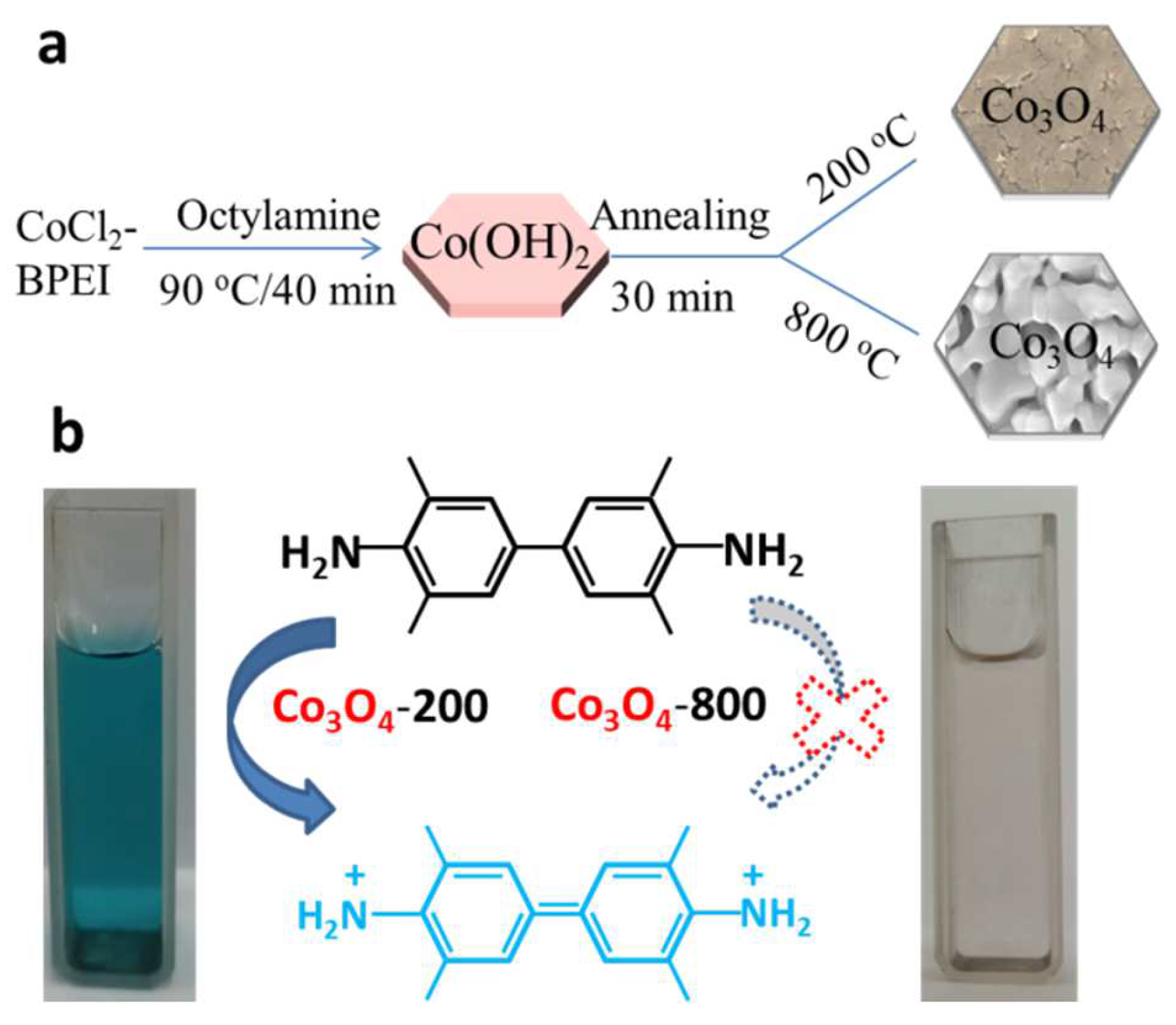

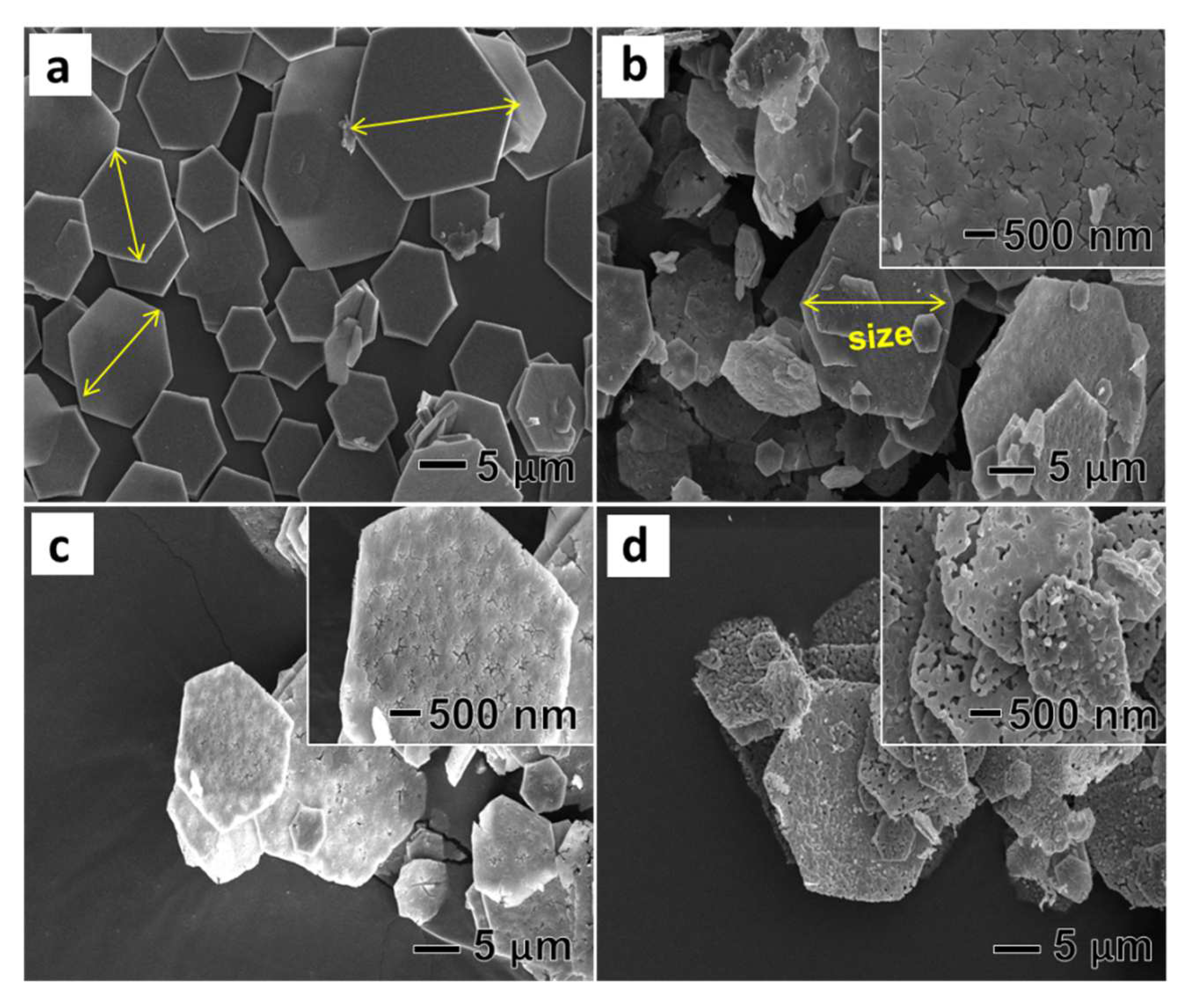
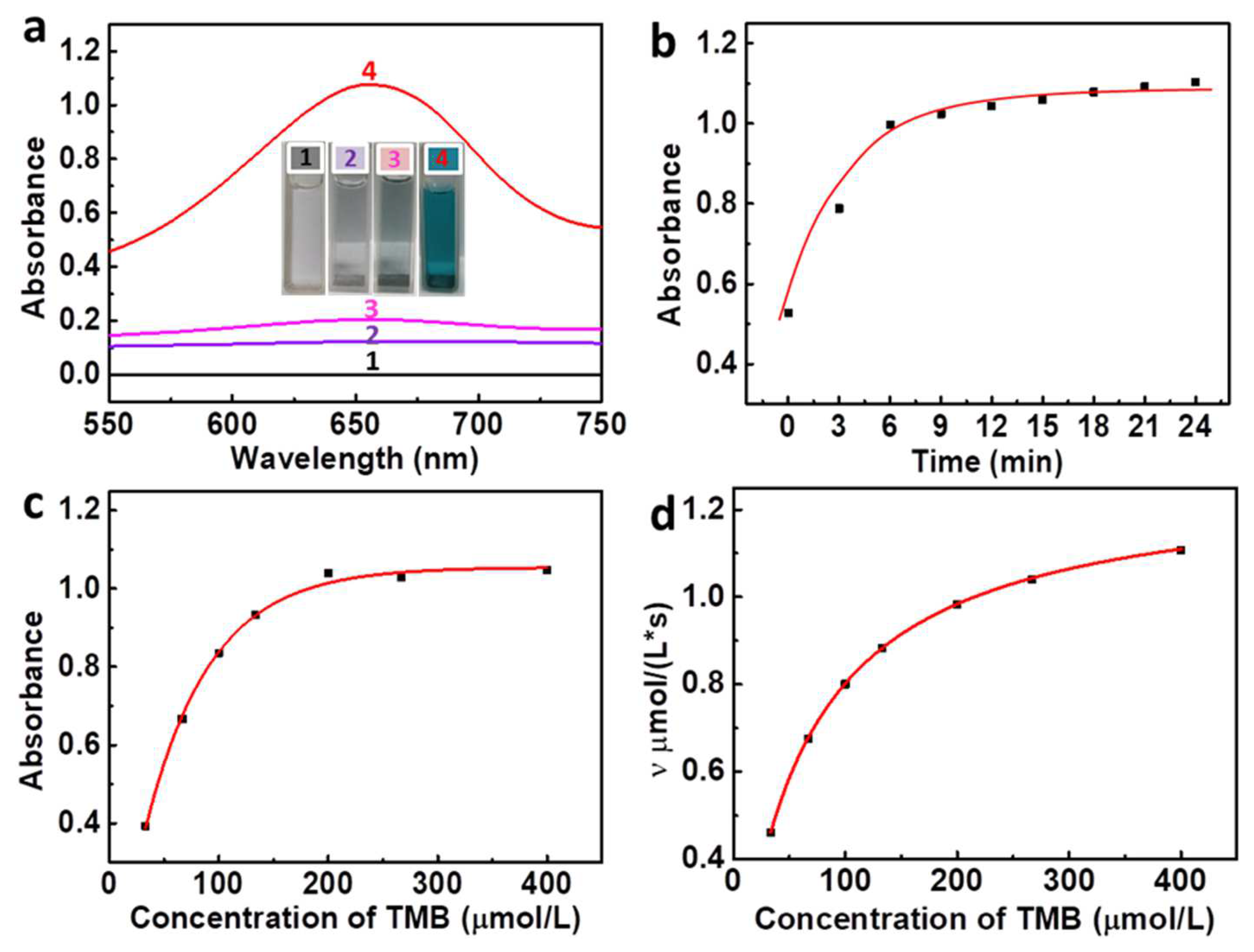
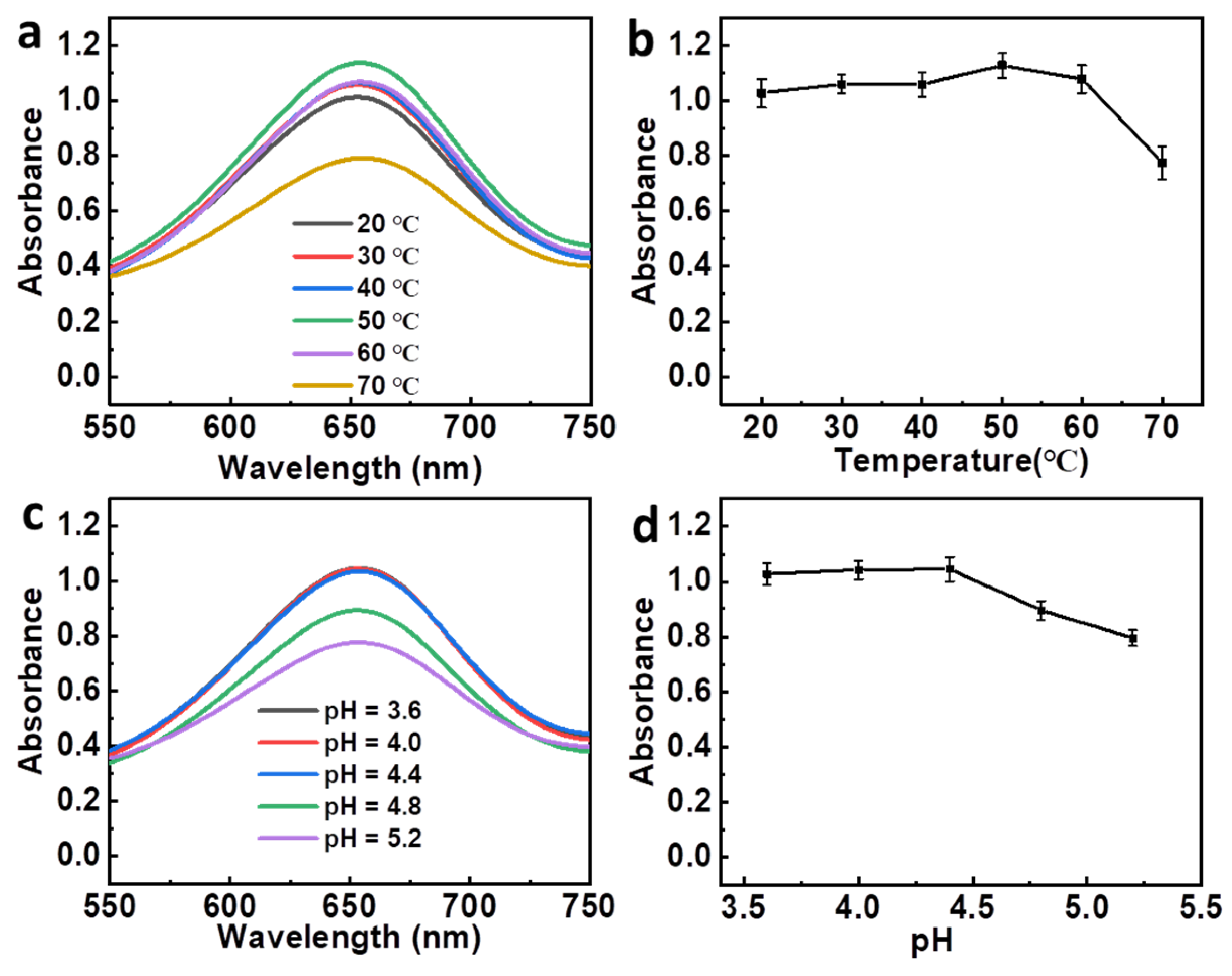
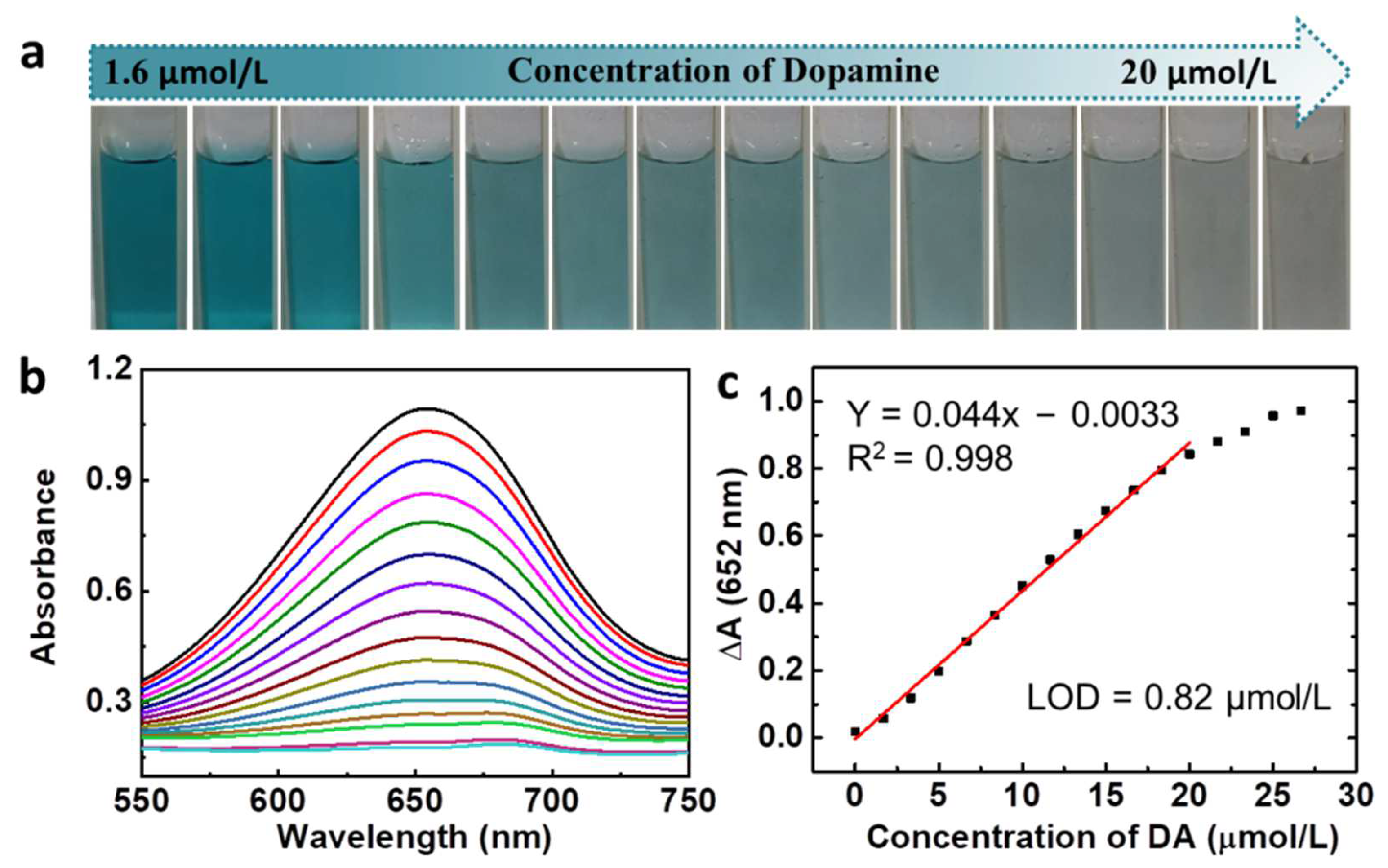
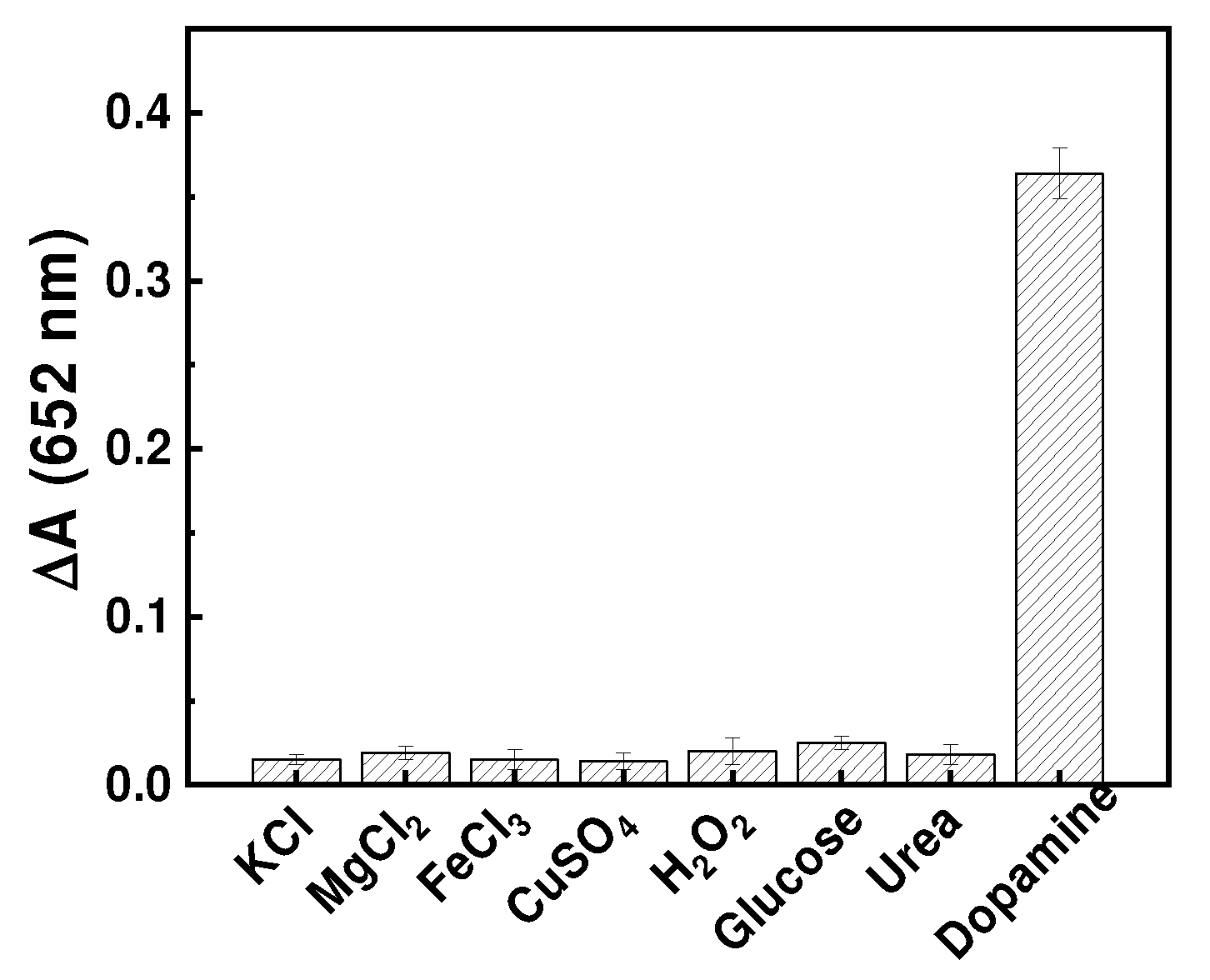
| Samples | Specific Surface Area (m2/g) |
|---|---|
| Co3O4-200 | 80.472 |
| Co3O4-500 | 6.796 |
| Co3O4-800 | 5.158 |
Publisher’s Note: MDPI stays neutral with regard to jurisdictional claims in published maps and institutional affiliations. |
© 2022 by the authors. Licensee MDPI, Basel, Switzerland. This article is an open access article distributed under the terms and conditions of the Creative Commons Attribution (CC BY) license (https://creativecommons.org/licenses/by/4.0/).
Share and Cite
Tang, Z.; Zhang, L.; Tang, S.; Li, J.; Xu, J.; Li, N.; Xu, L.; Du, J. Synthesis of Co3O4 Nanoplates by Thermal Decomposition for the Colorimetric Detection of Dopamine. Nanomaterials 2022, 12, 2990. https://doi.org/10.3390/nano12172990
Tang Z, Zhang L, Tang S, Li J, Xu J, Li N, Xu L, Du J. Synthesis of Co3O4 Nanoplates by Thermal Decomposition for the Colorimetric Detection of Dopamine. Nanomaterials. 2022; 12(17):2990. https://doi.org/10.3390/nano12172990
Chicago/Turabian StyleTang, Zengmin, Ling Zhang, Sijia Tang, Junping Li, Jianxiong Xu, Na Li, Lijian Xu, and Jingjing Du. 2022. "Synthesis of Co3O4 Nanoplates by Thermal Decomposition for the Colorimetric Detection of Dopamine" Nanomaterials 12, no. 17: 2990. https://doi.org/10.3390/nano12172990
APA StyleTang, Z., Zhang, L., Tang, S., Li, J., Xu, J., Li, N., Xu, L., & Du, J. (2022). Synthesis of Co3O4 Nanoplates by Thermal Decomposition for the Colorimetric Detection of Dopamine. Nanomaterials, 12(17), 2990. https://doi.org/10.3390/nano12172990






